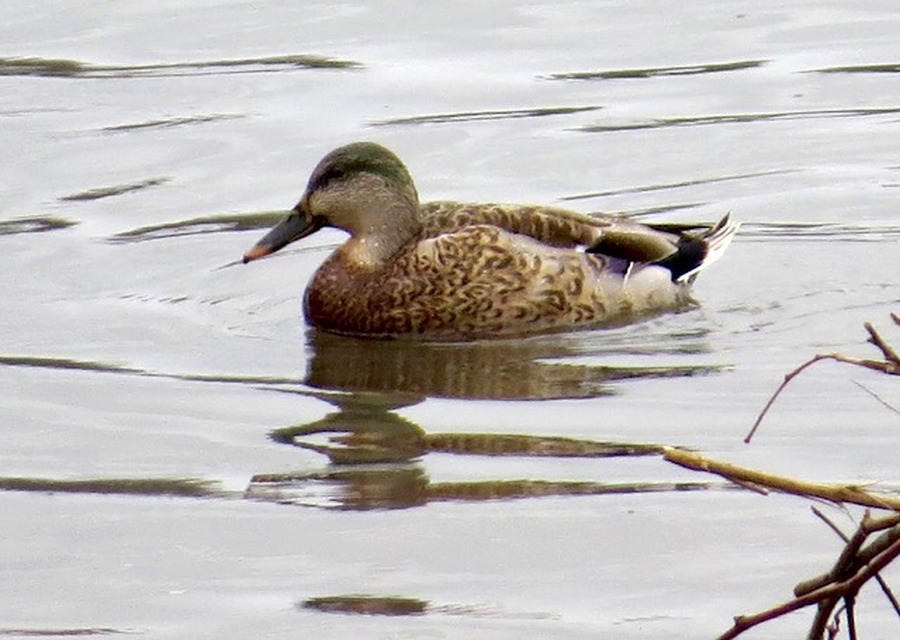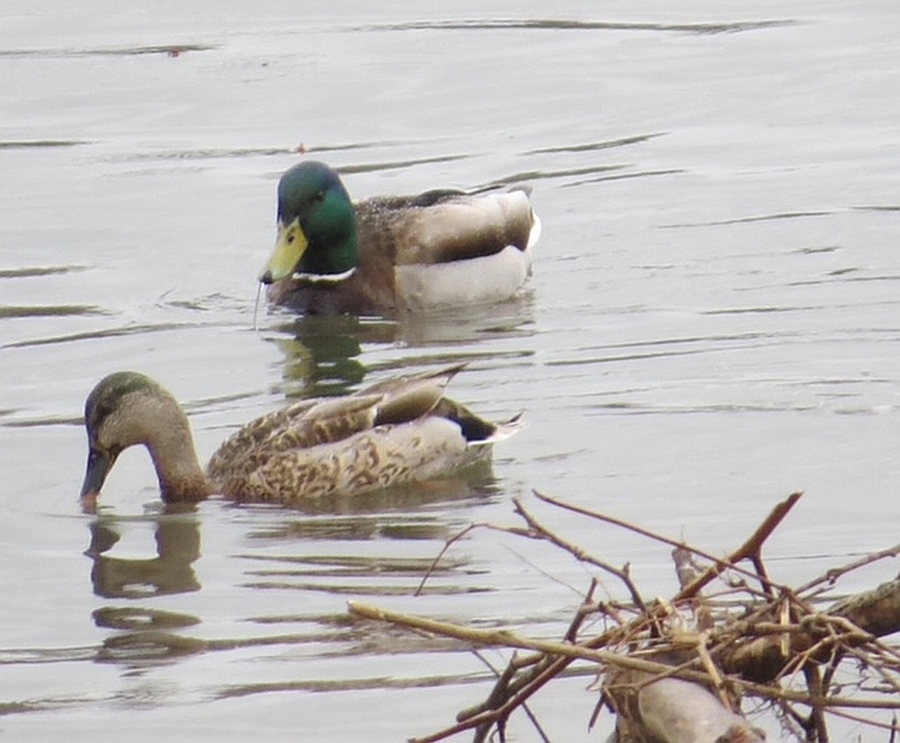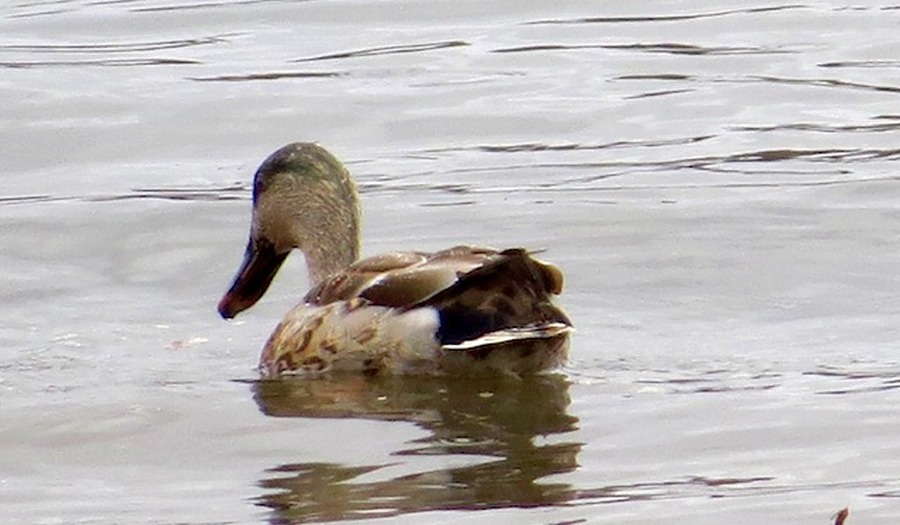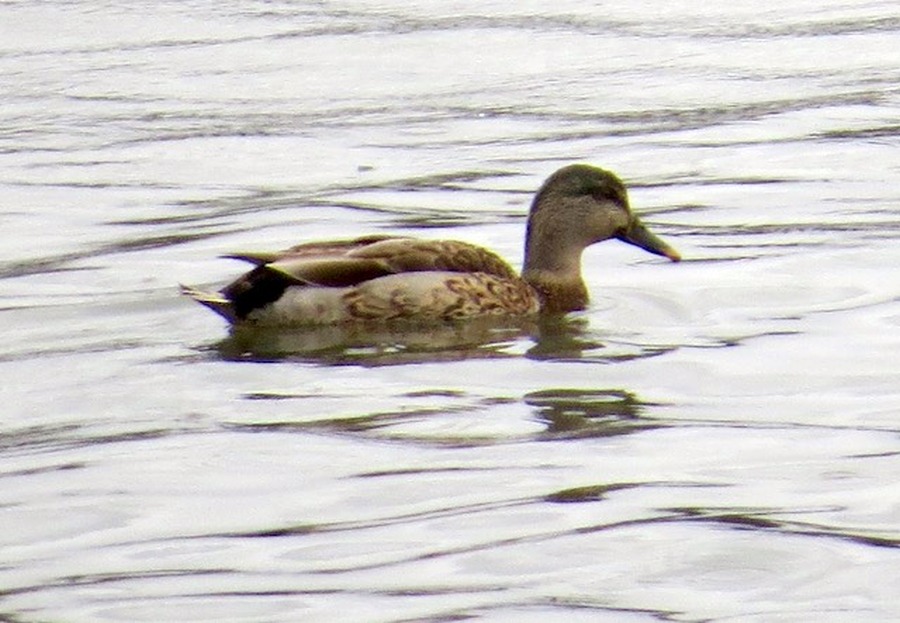
22 March 2022
On Sunday at Duck Hollow we saw a female mallard with odd plumage. She was paired with a male mallard but she resembled a male in eclipse plumage. Was this duck a hybrid? Or was it something else?

Michelle Kienholz was so intrigued that she took photos and sent them to the Duck ID group where she learned an amazing thing about female ducks. This odd mallard at Duck Hollow is an “intersex hen.” She is becoming male in a process called spontaneous sex reversal (SSR).
Unlike mammals whose sex chromosomes are XX in females and XY in males, female birds have WZ sex chromosomes and males have ZZ. This means that female birds have all the equipment they need to be female but if something suppresses the “W,” they are left with only “Z” and express as male. (Males cannot become female because they have no “W” at all.)
Female ducks are born with two ovaries but only one develops. The left ovary actively pumps out hormones to stifle the male genes, making the bird truly female. If a disease damages the only ovary and it stops producing hormones the female duck spontaneously turns into a male. Experiments have shown that the now-male duck is able to breed and fertilize eggs.
Because most ducks are sexually dimorphic a female with a dead ovary eventually looks male as well. The intersex hen at Duck Hollow is partway through her/his outward transformation, which is why she/he is in eclipse-like plumage.
Notice the clues in her/his feathers that indicate the transition:
- tail feathers are black and curly white,
- green feathers interspersed on head
- breast is darkening (top photo)
- color line between neck and breast is becoming white


Read more about Spontaneous Sex Reversal in ducks and see a video in this BBC article: How Does a Duck Change Its Sex?
For more information on bird sex chromosomes see Anatomy: W and Z. For photos of eclipse plumage see Mallards in Eclipse. And here is an article about spontaneous sex reversal in chickens, a problem for chicken farmers.
(photos by Michelle Kienholz)
Fascinating!!!
Thank You so much for this article. My sons companion has been making this transformation now for the past 2 years. in the beginning we had x-rays done to check her abdomen for possible tumors.
It has been very scary for us because we weren’t sure of how things were going to turn out and she is a vital part of this family. If you have any other information on this topic I would certainly be very interested in it.
I’ve been visiting a duck for over a year now that has male attributes but is still female. In this time though nothing has progressed. Could it be that she’s permanently in between?
Isabella, I don’t know. The phenomenon was new to me. I only know that it happens.
I have a male khaki camel duck that used to quack like a female. I feel this is exactly what happened. He makes the raspy sound now but gets beat up a lot and mounted by the other males.
Thank you for this! I encountered one of these birds today in South Park. I always thought the “intersex plumage” term was a slight misnomer because they were described online as entirely female ducks with plumage changes only due to hormonal shifts with age (when I learned about them on an id forum a ways back.) Google brought me to your post which has taken this to a whole new level for me. I never knew that there was a possible larger transition happening. Fascinating links! I have photos of the bird in this checklist if anyone is interested: https://ebird.org/checklist/S160371949 (Or if you see something different going on, please flag so I can correct)